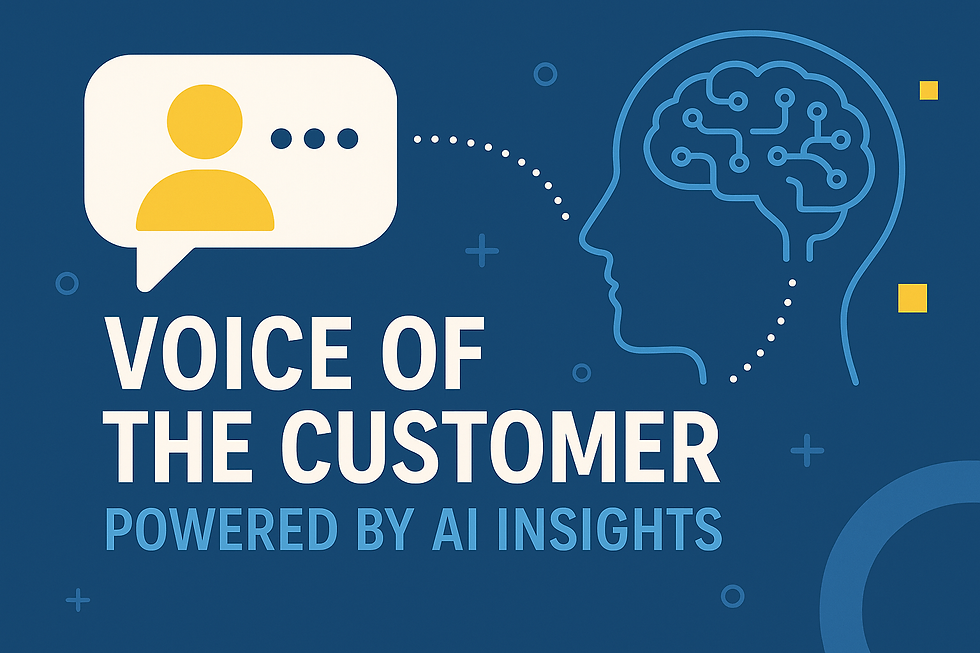Voice of the Customer, Powered by AI Insights
- eCommerce AI

- Oct 4
- 2 min read

For decades, brands have claimed to “listen” to their customers. But listening isn’t the same as understanding.
Today, the true voice of the customer (VoC) doesn’t come from surveys or feedback forms — it’s hidden in the thousands of conversations, reviews, and interactions happening across every channel, every day.
And AI is finally making that voice clear, structured, and actionable.
The Problem With Traditional Listening
Classic VoC programs relied on human sampling — small datasets, lagging reports, and limited emotional context. By the time insights reached decision-makers, customer sentiment had already shifted.
Traditional feedback collection answered what customers said — but not why they said it. It missed tone, urgency, and the subtle patterns that define experience in real time.
AI as the New Microphone
Modern AI systems don’t just analyze text; they interpret emotion, intent, and friction across every digital touchpoint.
Natural Language Processing (NLP) detects recurring frustrations and emerging needs.
Sentiment analysis classifies emotions across calls, chats, and emails.
Voice AI listens for stress and satisfaction cues in tone and pacing.
Conversational intelligence aggregates all this data into themes that teams can act on immediately.
It’s no longer about collecting feedback — it’s about hearing customers at scale.
Turning Conversations Into Strategy
When AI insights feed directly into operations, they create a live feedback loop.
For example:
Product teams discover friction points in checkout or pricing.
Marketing learns which promises resonate — and which don’t.
Support teams identify common complaints before they trend.
AI turns every customer interaction into a strategic signal — an early-warning system that strengthens decisions across the organization.
Predicting, Not Just Reacting
The next frontier in VoC isn’t real-time reporting; it’s predictive empathy.
By combining historical patterns with current trends, AI can forecast which customer segments are at risk of churn, which regions are likely to spike in complaints, or which messages will drive loyalty.
Instead of asking customers how they feel — brands will already know.
The Nurix Approach: Insights That Act
Companies like Nurix are bringing this predictive capability into reality — building AI agents that don’t just measure sentiment, but help brands act on it instantly.
When AI identifies a dip in satisfaction, Nurix’s system can trigger proactive outreach, adjust messaging, or even re-route a live call to the right specialist.
That’s what makes today’s VoC ecosystem truly intelligent — not dashboards, but decisions that happen in the moment customers need them.
The Takeaway
AI is redefining what it means to listen.
The modern voice of the customer isn’t a data point — it’s a continuous dialogue, decoded by systems that finally understand both language and emotion.
And for brands that learn to hear it — the reward isn’t just happier customers, but smarter, faster, and more human organizations.




Comments